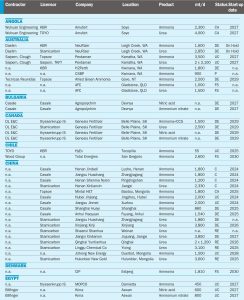
Samsung to build UAE’s first methanol plant
UAE-based chemicals and transition fuels hub TA’ZIZ has awarded an engineering, procurement, and construction (EPC) contract worth $1.7 billion to engineering company Samsung E&A to build the UAE’s first methanol plant. The facility will be located at the Al Ruwais Industrial City in the western part of the emirate of Abu Dhabi. It is projected to produce 1.8 million t/a green methanol, powered by clean energy from the grid, with the plant scheduled for completion in 2028.




